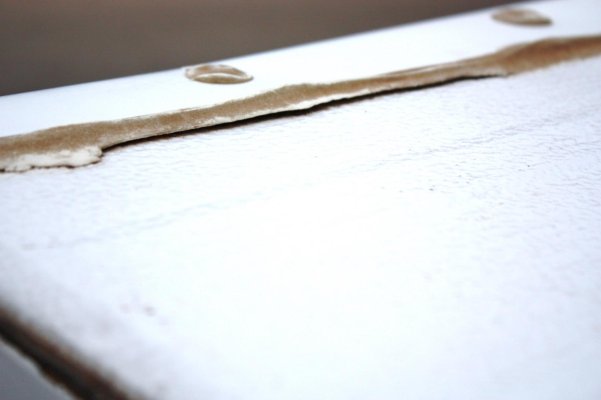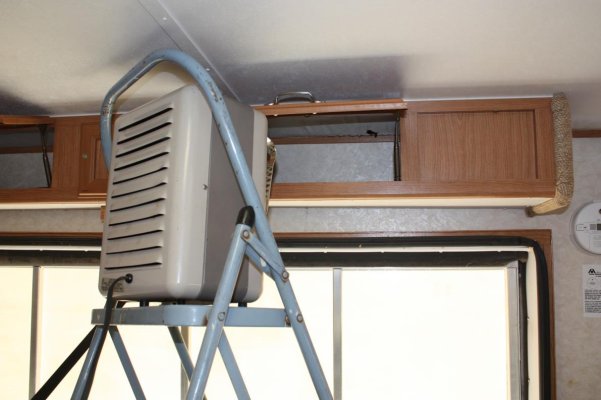jcurtis95
Senior Member
I'm just wondering if anyone has run into this problem before. We just arrived in the beautiful [and very cold] shores of Lake Eufaula, in Eufaula, Oklahoma. It is cold and going to freeze tonight so I didn't hook up any outside hoses [water or sewer]. As I was finishing setting the Hi-Lo up, I noticed something that was not there before. A crack has developed on the rear shroud covering of our Hi-Lo. When we awoke this morning it was raining and I arose and did my normal bathroom thing, a drop of water hit me on my head. It was coming from the vent above the toilet. I pulled at the edge of the interior frame, and a considerable amount of water leaked into the bathroom. It eventually stopped and I thought it must be because of the high winds and rain we experienced all night.
After arriving in our new campsite today and as I was seting up this afternoon, I looked up at the back of our 2406 Towlite and I saw a crack in the back shroud that I had not noticed this morning. We had traveled some back highways in Oklahoma and they were pretty rough but not anything that I thought could have caused this. My wife, Carol, said it must have happened last Saturday when we had the RV detailed and the guy was on top of the RV cleaning the black off the roof. Maybe so, but I think I would have noticed it at the time. The man who was on the roof weighed only 160 pounds which should have been okay at that weight.
Anyway, there is a crack that has develeoped n the rear cover just over the running ight lens and I can clearly see daylight through it.
Aside from the obvious, that is, I must make some quick temporary repairs with some caulking, I'm wondering if anyone else has had this problem, and.. what is the suggested fix?
I appreciate any suggestions.
Jerry & Carol Curtis Fredericksburg, TX
2406 T Towlite F250 4x4 7.3 Diesel
After arriving in our new campsite today and as I was seting up this afternoon, I looked up at the back of our 2406 Towlite and I saw a crack in the back shroud that I had not noticed this morning. We had traveled some back highways in Oklahoma and they were pretty rough but not anything that I thought could have caused this. My wife, Carol, said it must have happened last Saturday when we had the RV detailed and the guy was on top of the RV cleaning the black off the roof. Maybe so, but I think I would have noticed it at the time. The man who was on the roof weighed only 160 pounds which should have been okay at that weight.
Anyway, there is a crack that has develeoped n the rear cover just over the running ight lens and I can clearly see daylight through it.
Aside from the obvious, that is, I must make some quick temporary repairs with some caulking, I'm wondering if anyone else has had this problem, and.. what is the suggested fix?
I appreciate any suggestions.
Jerry & Carol Curtis Fredericksburg, TX
2406 T Towlite F250 4x4 7.3 Diesel














